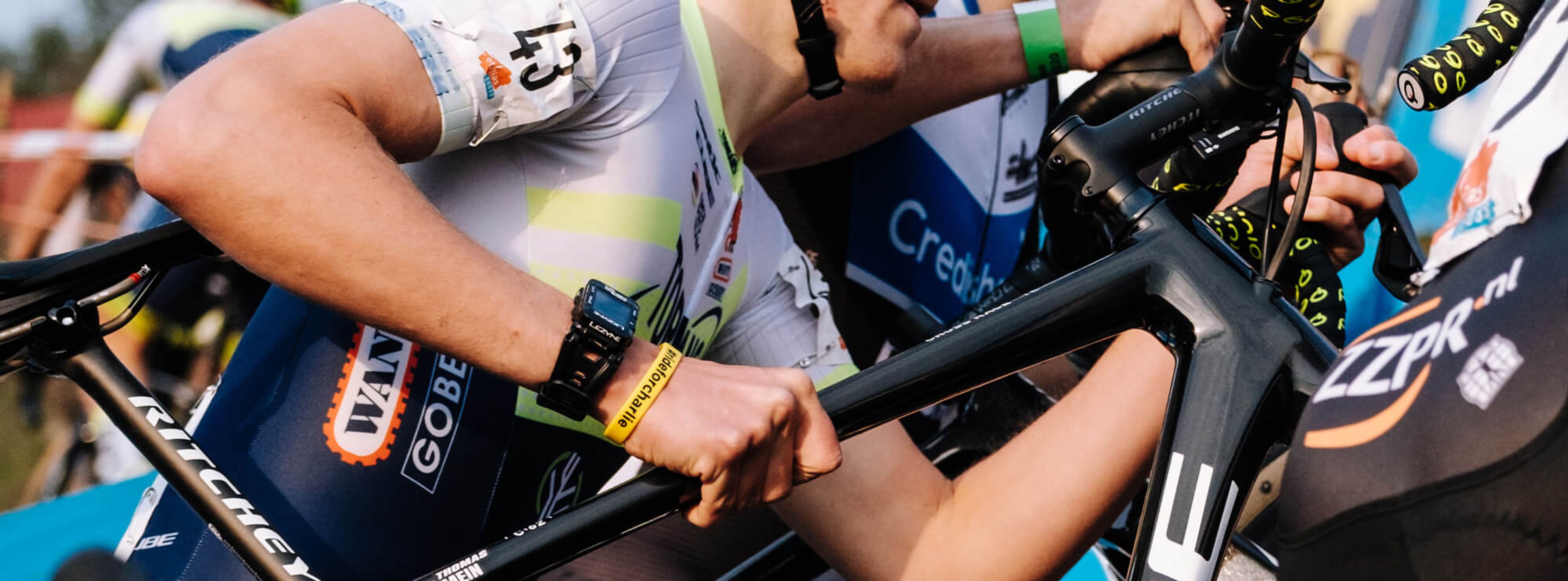What do you know about product placement in pro racing?
Product placement is everywhere in professional cycling. Sometimes you notice it. Sometimes you don't. We talk with the Tormans CX team about what they know about product and brand visibility.
Product placement has been around for more than 100 years and has become so deliberate that it hardly registers a pulse anymore. Unless of course, when the product is out of place. For example, after 50 years of vodka martinis, in 2012 James Bond reached for a (gasp) Heineken, which left fans shaken and stirred.
Millions of dollars get subdivided each year into valuable real estate that’s up for grabs in professional cycling. Equipment and clothing are blank canvases upon which racers write their performances and – assuming they have trained just as hard as their rivals, well then it must be the bikes that give them their racing edge. A well-placed product along with a podium finish, national title, and/or world championship will drown out any sponsored lip service, which can sometimes sound artificial and hollow, like a windup toy with a prerecorded message.
At the moment, Great Britain leads the world in U23 men’s cyclocross. Thomas Mein of Ritchey-sponsored Tormans CX has helped put them there, ahead of almighty Belgium and the Netherlands. But Mein’s teammate, Quinten Hermans, who’s rallying back from a nasty crash suffered in the Dauphiné, has been piling up the points to rank inside the top 10 worldwide. And while they are being watched by the world, we wanted to see what you notice about product placement in pro racing.
How many product placements can be found on a pro ‘cross bike?
Hundreds – that’s how many product placements Hermans reckons could be found on his bike if one were to examine all the parts. He pointed out that valves and glue are no less product features than rims and tires, they’re just less visible. Mein narrowed it down to six obvious product placements on his bike. The high visibility and accessibility of cyclocross provide ample opportunity to check out pro bikes, which can vary a lot between racers. There’s reason to inspect the handlebars, stem, seatpost, bar tape, wheels, and tires – especially since no two racers are alike.
Product developers rely on racers for feedback on what they liked and didn’t like about a specific product. Racers rely on high-performing products to aid them in their race goals; it’s this symbiosis that underscores the value of sponsorship.
“Smooth is fast” — Quinten Hermans
“For example, I chose the Ritchey WCS Carbon Streem bars instead of the aluminum ones because I like more flexibility, and because they are perfect for sprinting,” Hermans said. “The roads are bad in Belgium and I don’t feel the small bumps because the carbon bars absorb them. It’s the small details about the bike that make a difference at the end.”
What’s the number 1 rule in real estate?
Same as buying property, logo placement is all about location, location, location, especially on cycling clothing. Sponsorship $$, €€, or ££’s tick upward the more prized the placement is. For example, a logo positioned on the side of a racer’s body is more visible to spectators, photographers, and video cameras than in the front or back so it can cost more to be placed there.
Years ago a brand bet that its star sprinter would cross the finish line with such a lead, that he’d have time to put his hands up in a victory salute. So where do you think the brand placed its logo? If you guessed on the palms of the sprinter’s gloves, you’re either clever or you were paying attention that day.
Given that Thomas is from the United Kingdom (and presumably trains on the roads there), we asked him if there was greater value in placing logos on the right side, where they would be more visible there due to the direction of traffic in the UK. He remarked that he wasn’t sure but didn’t think that traffic flow affected logo placement.
What’s good product placement
When a conversation among friends starts with, “Did you see so-and-so’s bike with that great 'handlebar' at the 'World Championships?'” There’s a pretty safe bet that the product placement was effective. Hermans commented that aesthetic touches put in place for big events, like world championships or the Olympics, successfully starts buzz about a product without altering its performance.
What’s bad product placement
Racers who air their negative opinions about product failures on social media not only hurt the brand’s image but also likely hurt their chances of extending their contract or landing a new one. The only thing worse might be throwing a bike on live television, you decide.
So this brings up the question, “If a product placement is done well, would you notice?” Because if it’s done badly, chances are you surely would.
--
Words by Wendy Booher. Photos courtesy of Tormans CX Team and Cycling Media Agency.
Join now for engaging stories, exclusive offers and product news delivered right to your inbox.


